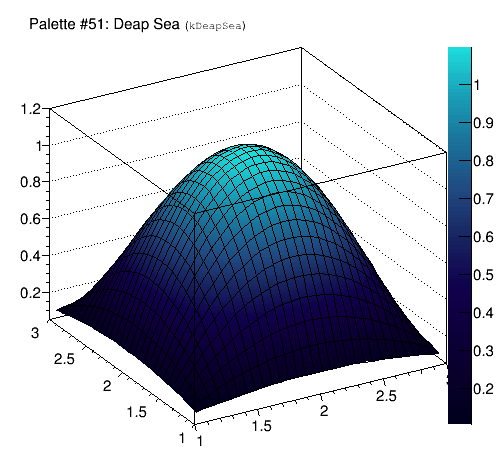
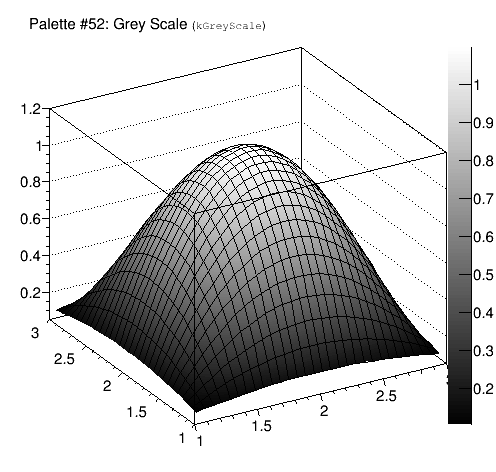
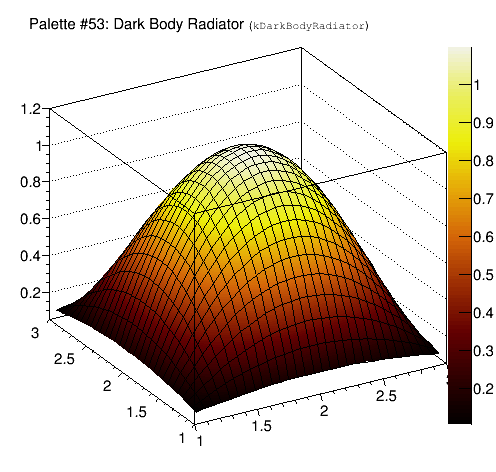
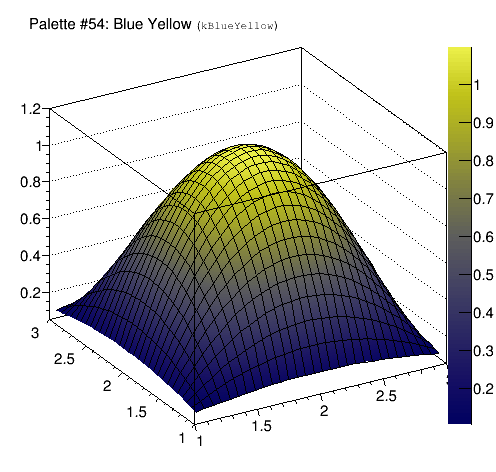
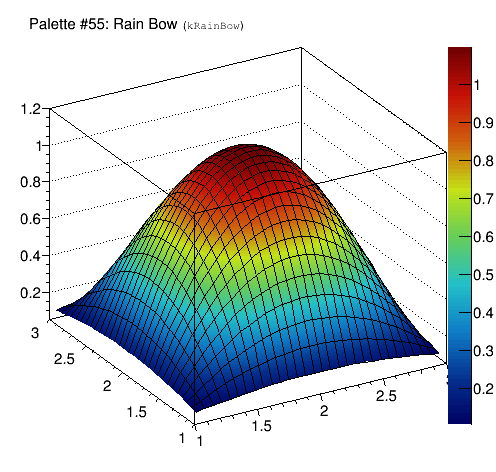
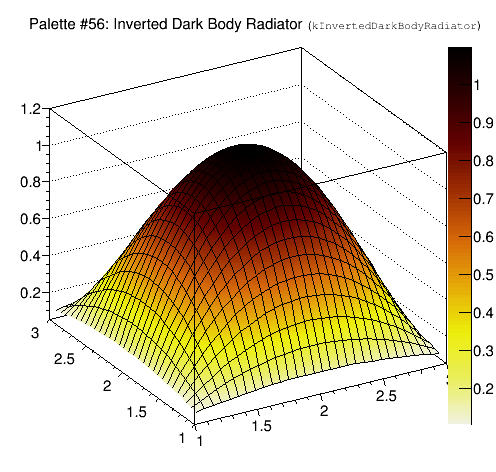
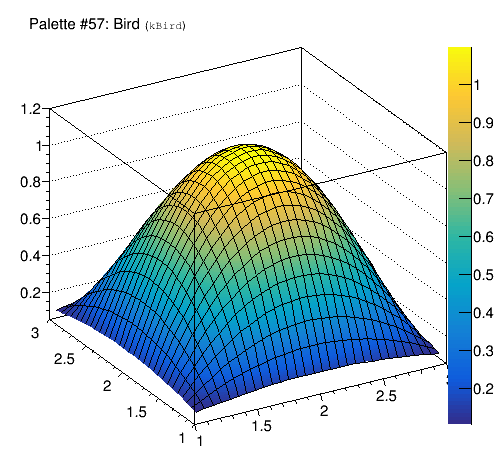
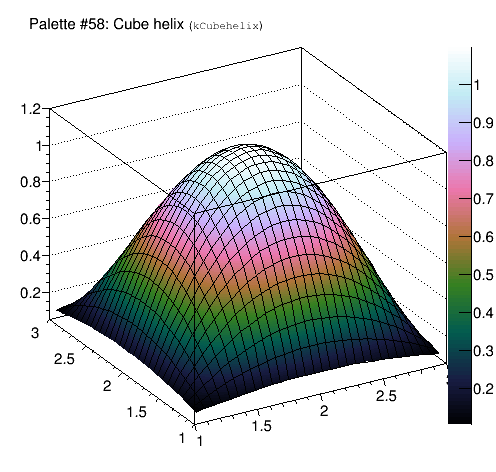
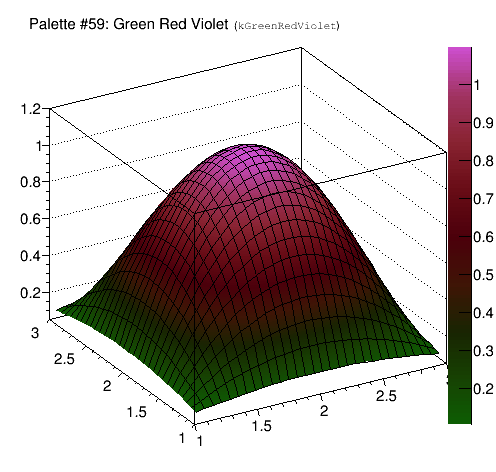
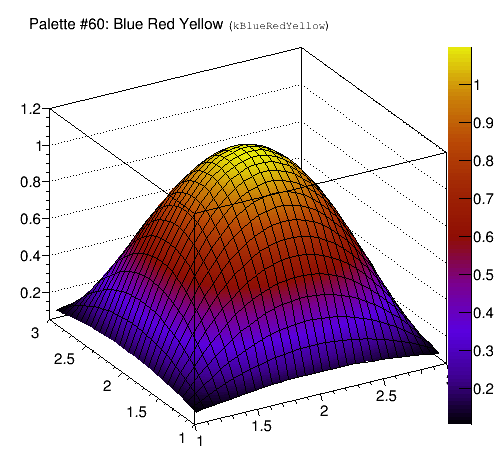
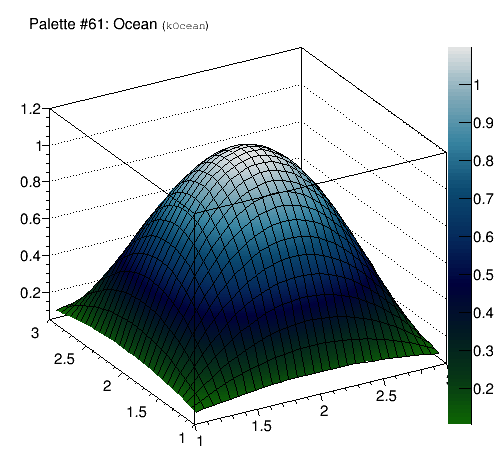
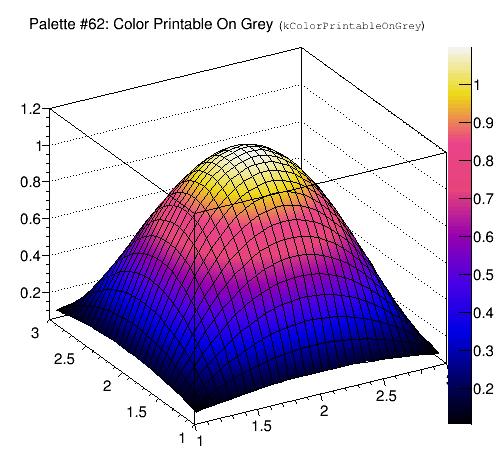
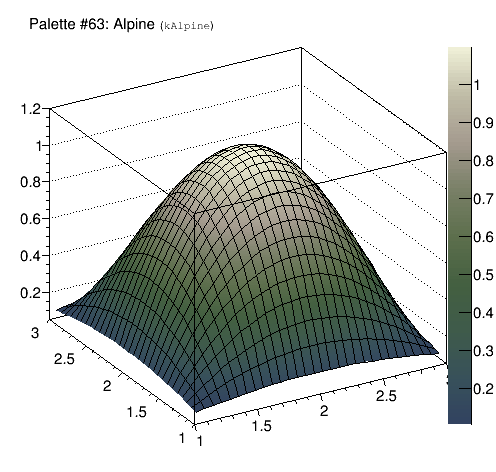

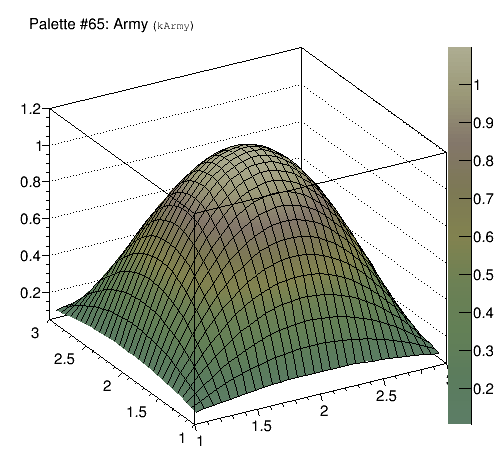
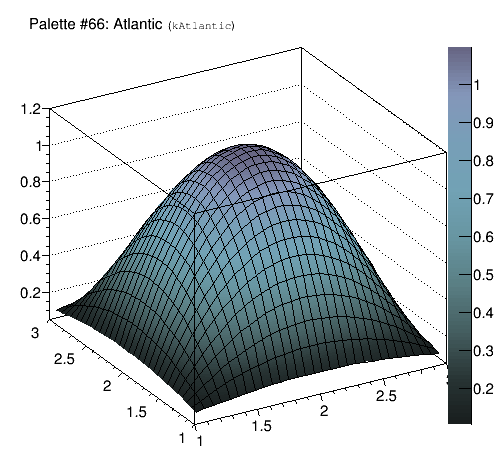
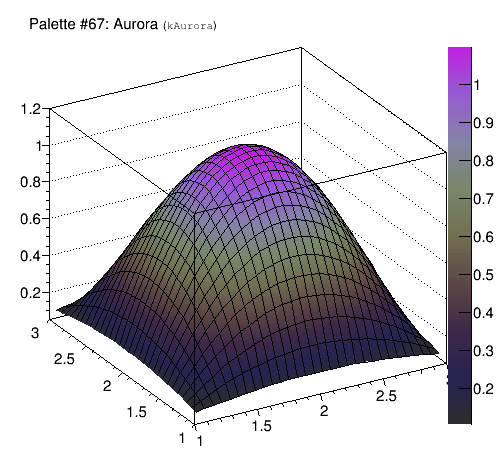
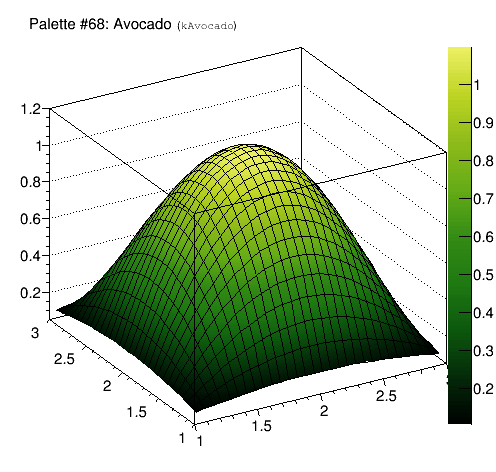
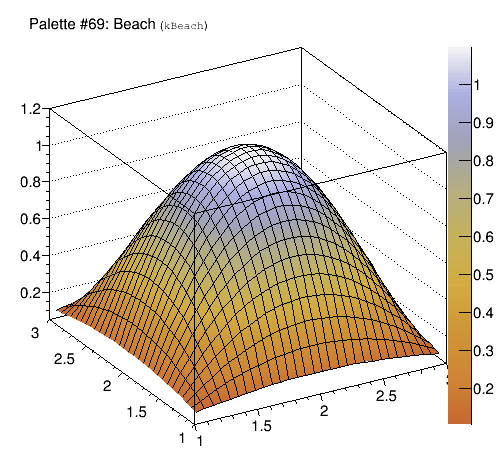
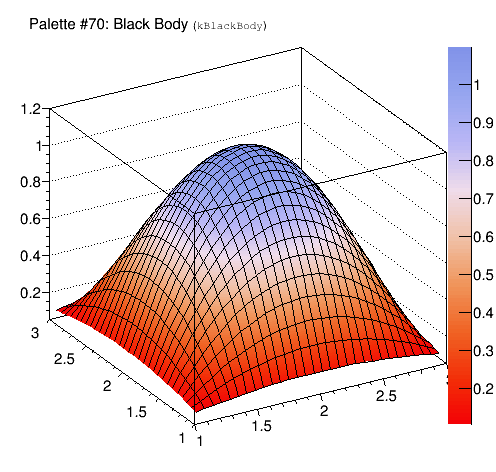

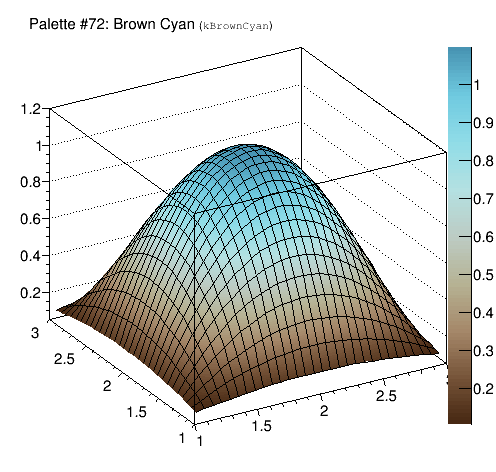
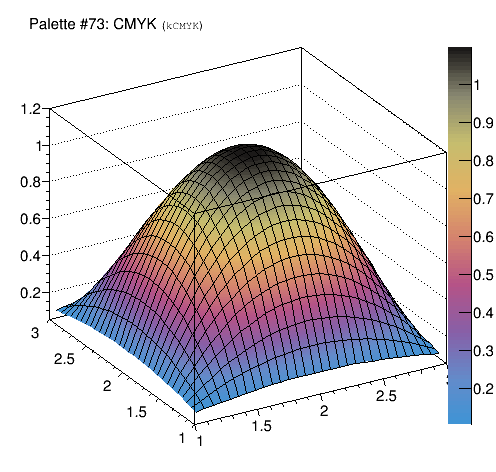
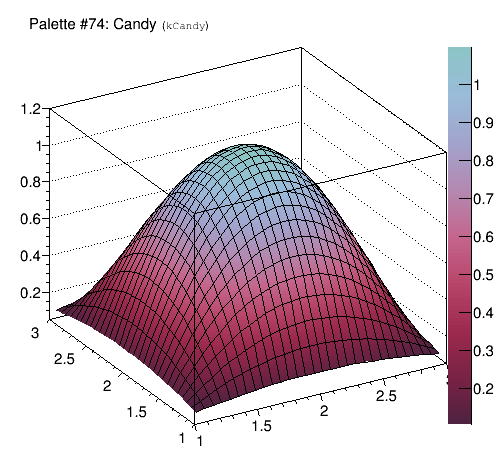
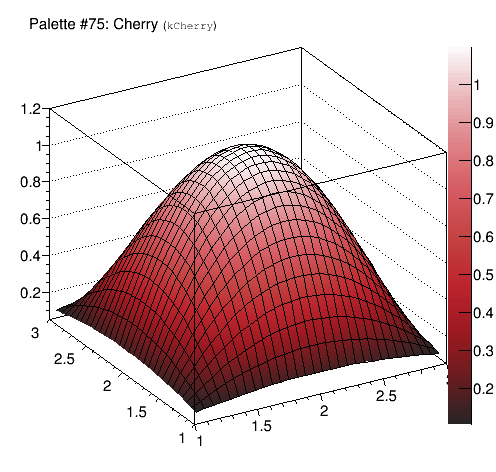
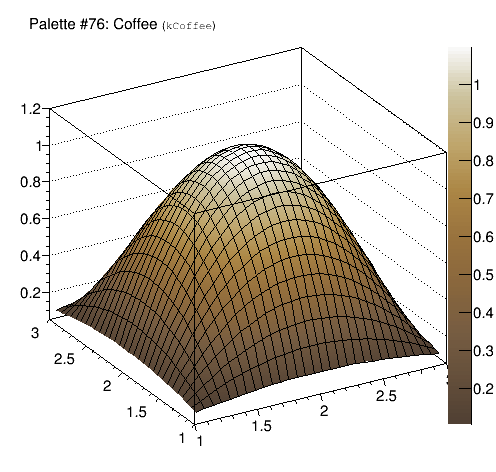
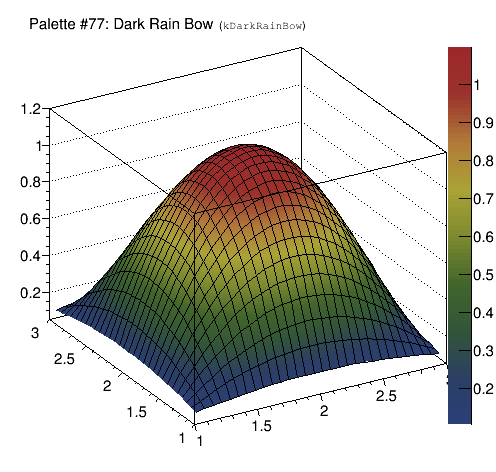
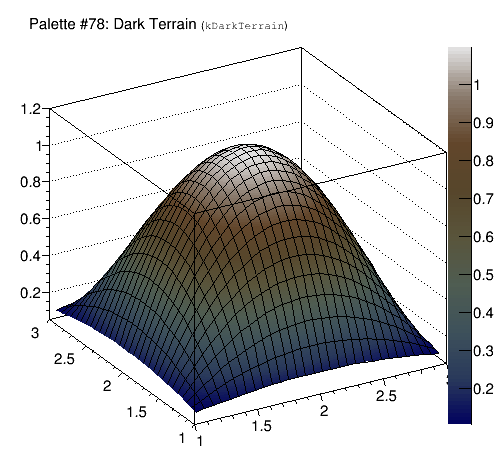
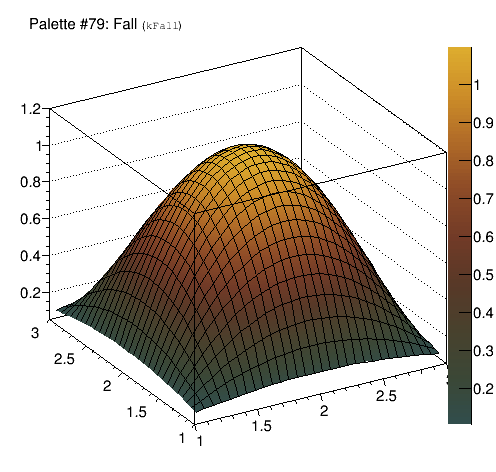
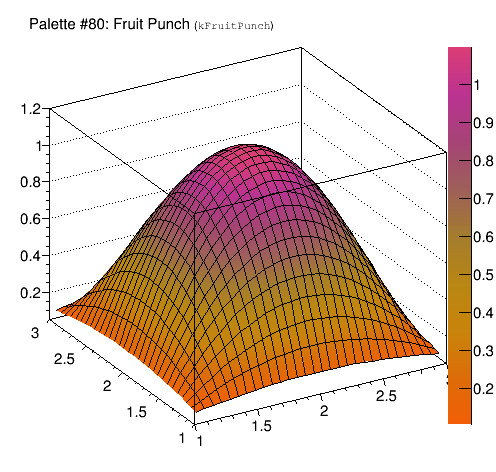
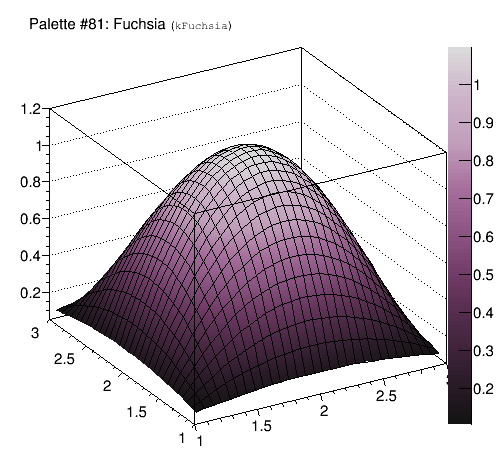


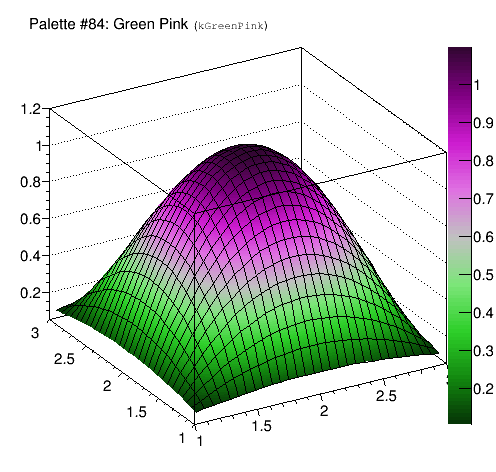
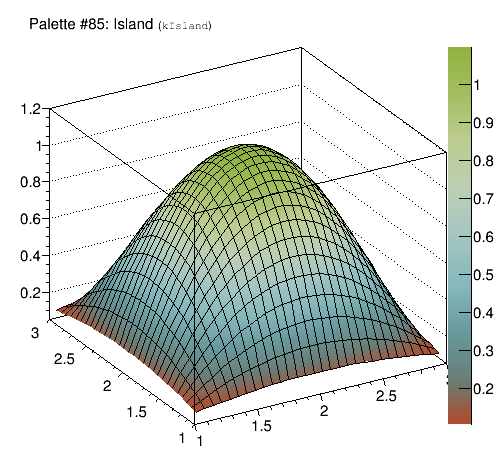
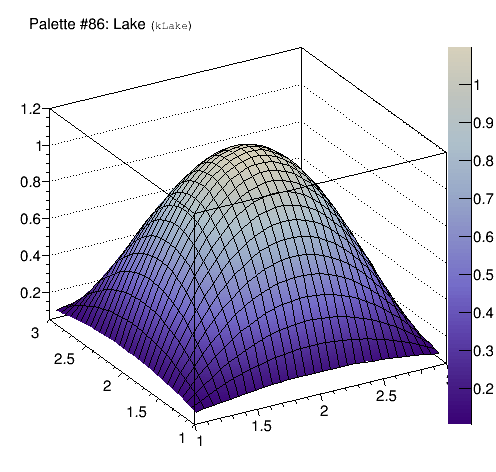
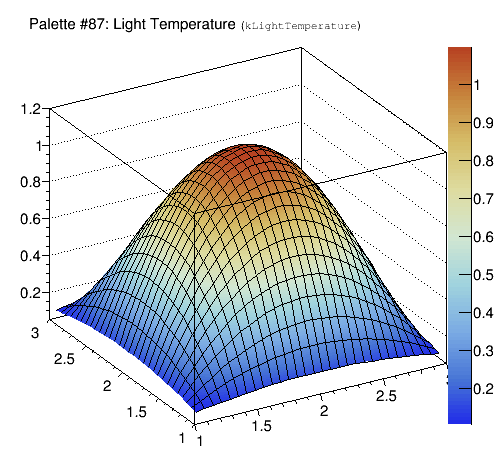
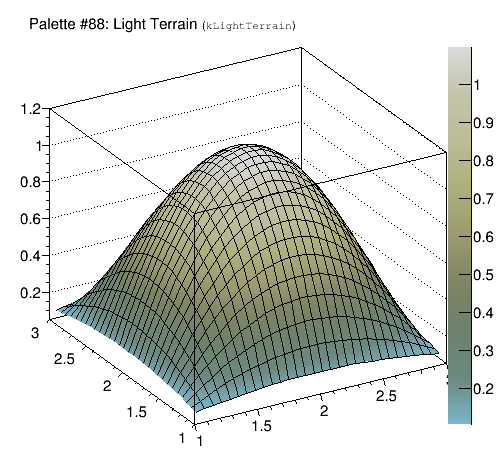
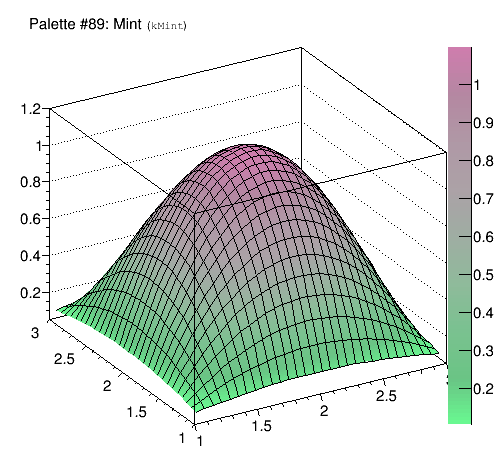
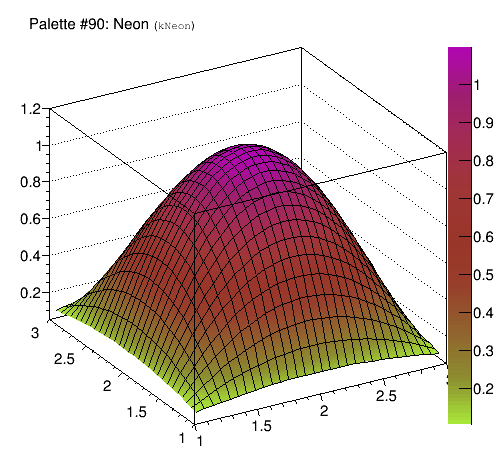

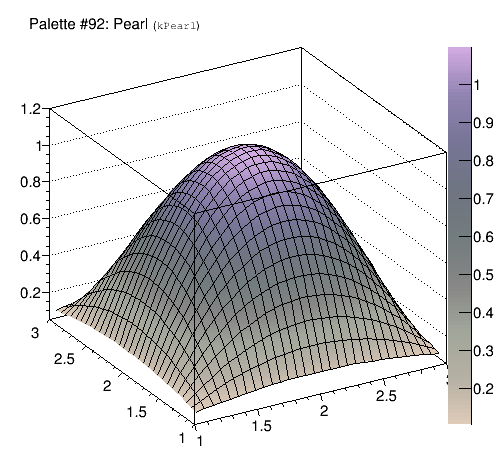
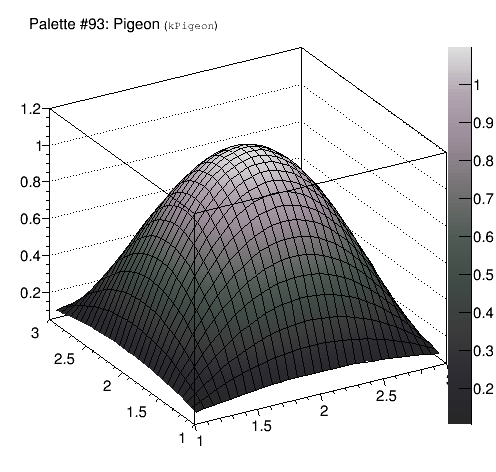
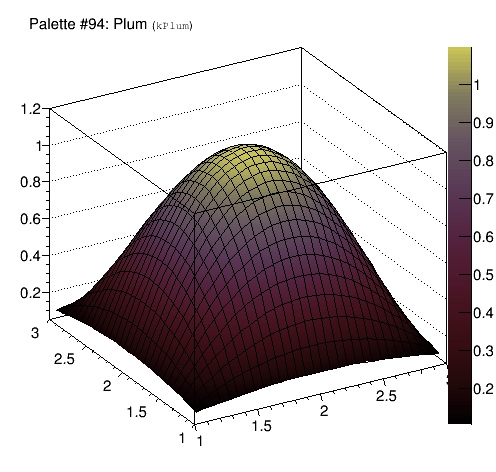
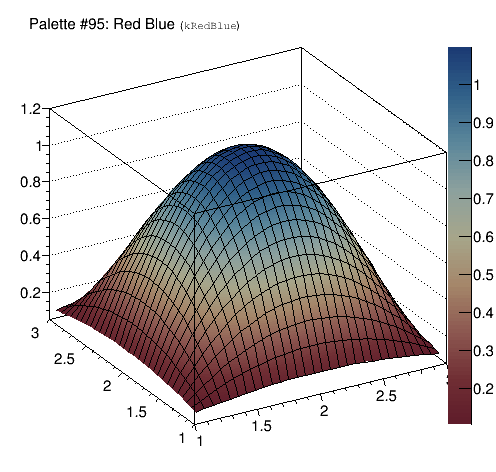
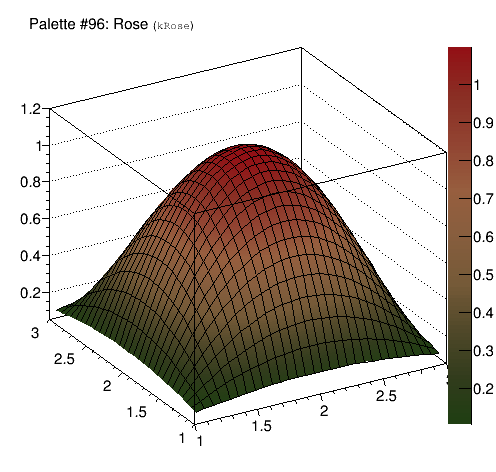
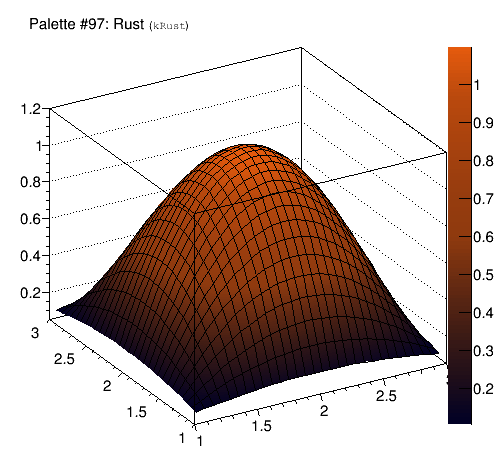
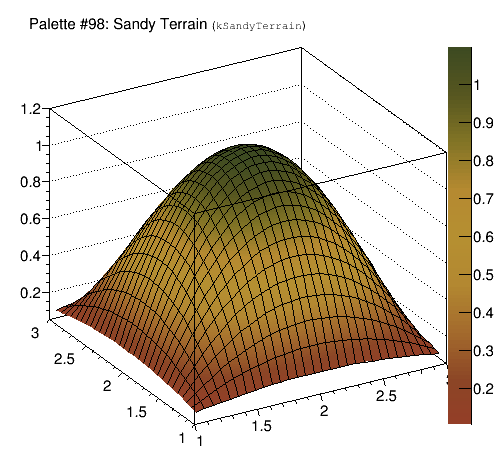
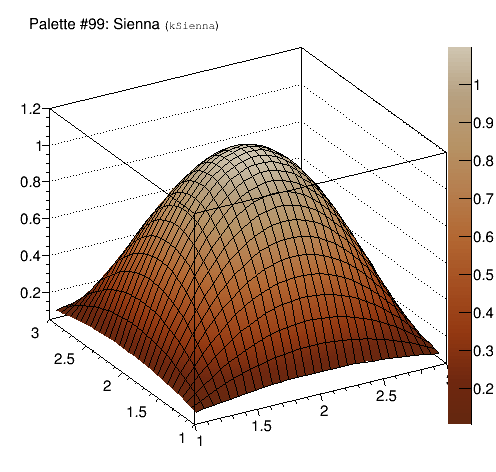
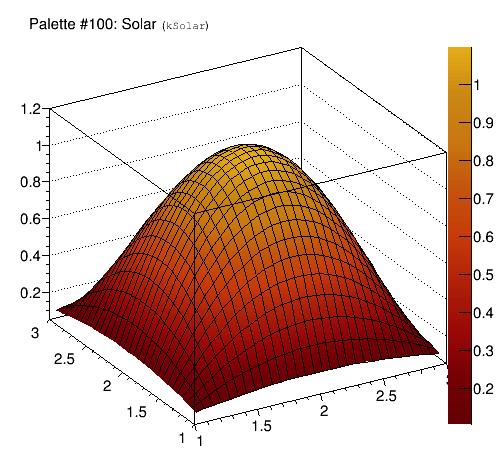
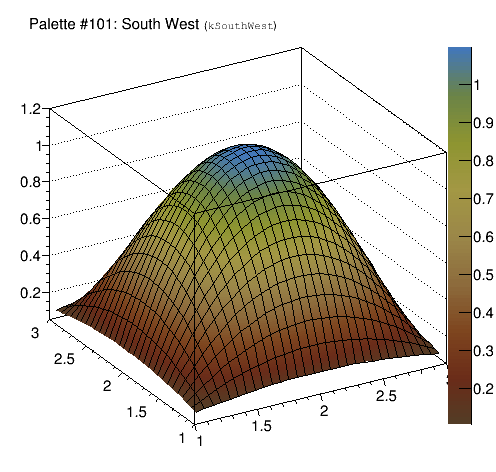
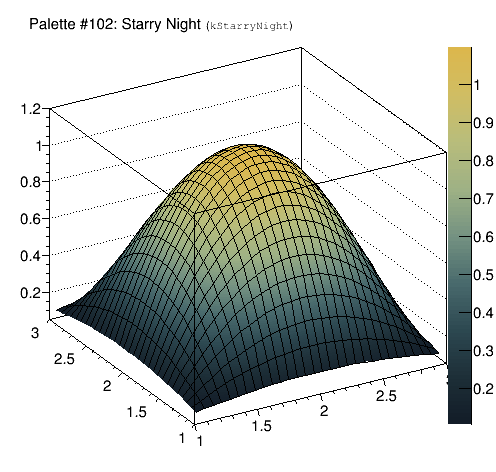
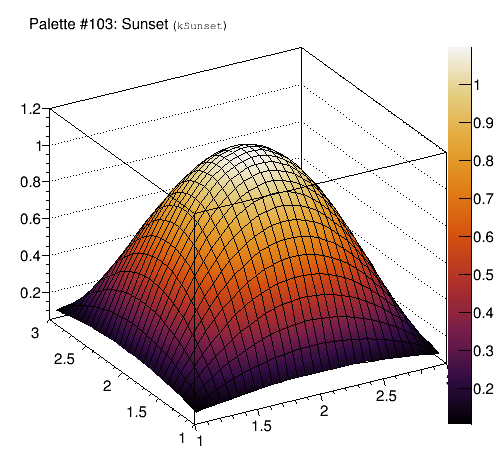
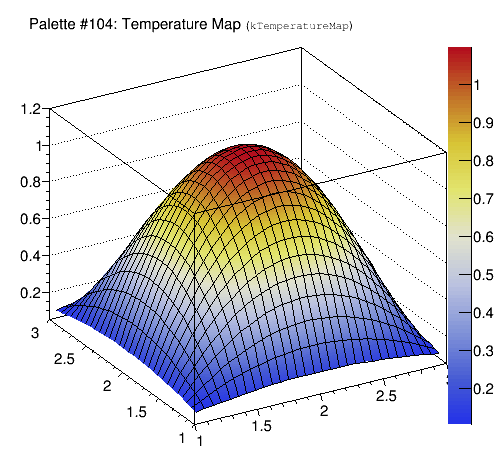
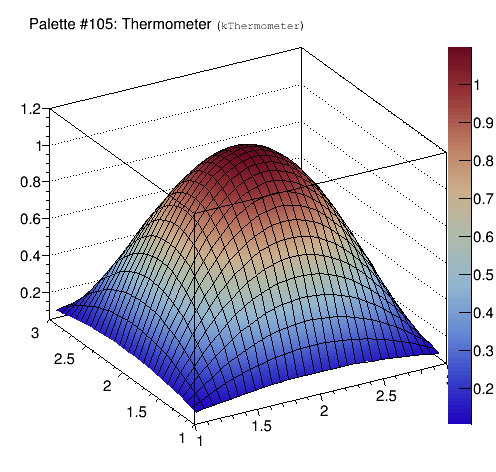
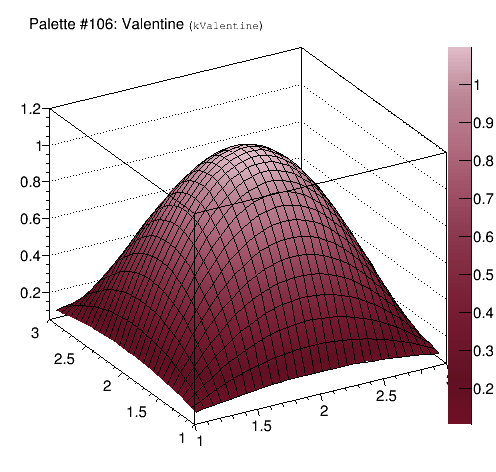
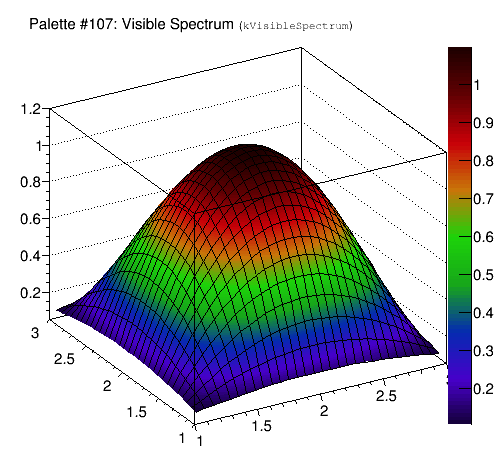
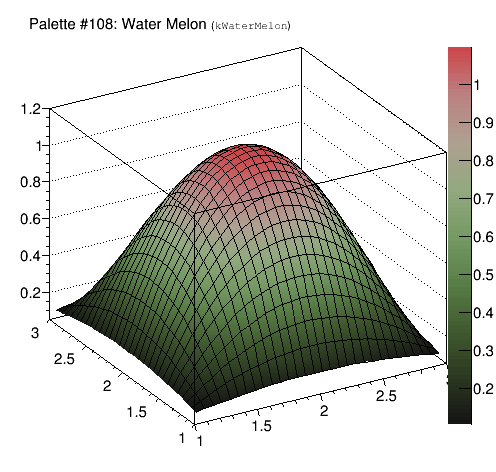
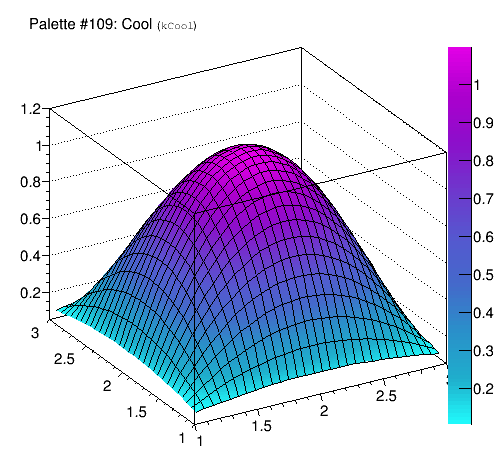
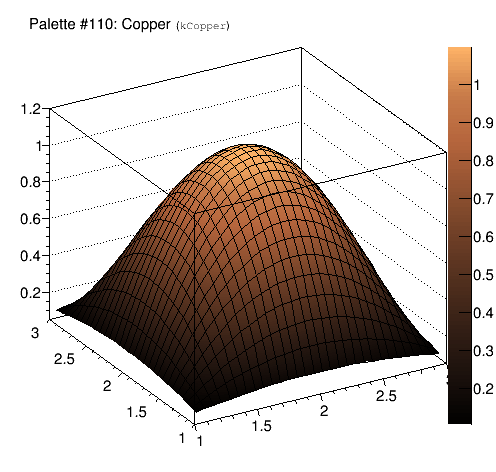
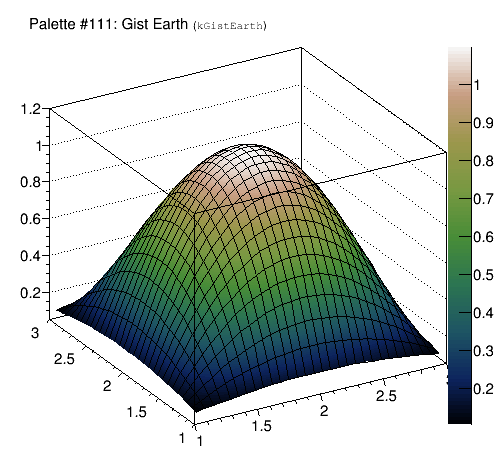
ROOT version 6.04/10 was released on 18 November, 2015. Changes with respect to 6.04/00 are listed at the end of the document.
For more information, see:
The following people have contributed to this new version:
David Abdurachmanov, CERN, CMS,
Bertrand Bellenot, CERN/SFT,
Rene Brun, CERN/SFT,
Philippe Canal, FNAL,
Cristina Cristescu, CERN/SFT,
Olivier Couet, CERN/SFT,
Kyle Cranmer, NYU, RooStats,
Aurelie Flandi, CERN/SFT,
Gerri Ganis, CERN/SFT,
Andrei Gheata, CERN/Alice,
Lukasz Janyst, CERN/IT,
Christopher Jones, Fermilab, CMS,
Wim Lavrijsen, LBNL, PyRoot,
Sergey Linev, GSI, http,
Pere Mato, CERN/SFT,
Lorenzo Moneta, CERN/SFT,
Axel Naumann, CERN/SFT,
Danilo Piparo, CERN/SFT,
Timur Pocheptsov, CERN/SFT,
Fons Rademakers, CERN/SFT,
Enric Tejedor Saavedra, CERN/SFT,
Liza Sakellari, CERN/SFT,
Manuel Tobias Schiller,
David Smith, CERN/IT,
Matevz Tadel, UCSD/CMS, Eve,
Vassil Vassilev, CERN/SFT
Wouter Verkerke, NIKHEF/Atlas, RooFit,
Yue Shi Lai, MIT,
Maciej Zimnoch, GSOC
ROOT now works on linuxarm64 / AArch64 / ARMv8 64-bit - thanks, David Abdurachmanov!
ROOT supports GCC 5.0 (a preview thereof) and XCode 6.3, Mac OSX 10.10.3
A lot of effort went into improving the thread-safety of Core and Meta classes / functions. A special thanks to Chris Jones from CMS!
Introduce a preview of C++17’s std::string_view. To take advantage of this new class use:
#include "RStringView.h"The documentation of this can be found at http://en.cppreference.com/w/cpp/experimental/basic_string_view The implementation provided is extracted from libcxx. Whenever the current compiler and standard library provide an implmentation, it is used.
The type string_view describes an object that can refer to a constant contiguous sequence of char-like objects with the first element of the sequence at position zero.
This type is used throughout the ROOT code to avoid copying strings when a sub-string is needed and to extent interfaces that uses to take a const char* to take a std::string_view as thus be able to be directly directly passed a TString, a std::string or a std::string_view. Usage example:
// With SetName(std::string_view)
std::string str; …
obj.SetName( str );
obj.SetName( {str.data()+pos, len} );TIsAProxy’s constructor no longer take the optional and unused 2nd argument which was reserved for a ‘context’. This context was unused in TIsAProxy itself and was not accessible from derived classes.
The new interface TInterpreter::Declare(const char* code) will declare the code to the interpreter with all interpreter extensions disabled, i.e. as “proper” C++ code. No autoloading or synamic lookup will be performed.
A new R_LOADLIBRARY(libWhatever) will load libWhatever at parse time. This allows ROOT to resolve symbols from this library very early on. It is a work-around for the following code from ROOT 5:
// ROOT 5:
void func() {
gSystem->Load("libEvent");
Event* e = new Event;
}Instead, write:
// ROOT 6:
R__LOAD_LIBRARY(libEvent)
#include "Event.h"
void func() {
Event* e = new Event;
}Introduced new overload for calculating the TClass CheckSum:
UInt_t TClass::GetCheckSum(ECheckSum code, Bool_t &isvalid) const;which indicates via the ‘isvalid’ boolean whether the checksum could be calculated correctly or not.
Implemented new gROOT->GetTutorialsDir() static method to return the actual location of the tutorials directory. This is $ROOTSYS/tutorials when not configuring with –prefix or -Dgnuinstall for CMake.
Add an enum to access the palette by name.
Add new palettes with 255 colors. Names and colors’ definitions have been taken from here. Except for the kBird palette. These palettes can be accessed with gStyle->SetPalette(num). num can be taken within the following enum:





























































Many, many bugs have been fixed; thanks to everyone who has reported them!
Cling is now using a new just-in-time compilation engine called OrcJIT, a development based on MCJIT. It enables interpretation of inline assembly and exceptions; it will hopefully in the near future also support interpreting thread local storage (but doesn’t at the moment).
Thanks to the new JIT, cling also comes with debug symbols for interpreted code; you can enable them with “.debug”.
Function calls through TMethodCall etc have been accelerated.
llvm / clang were updated to r227800. This includes everything from the clang 3.6 release.
Detect usage of #pragma once for inlined headers.
Turn on verbosity of genreflex if the VERBOSE environment variable is defined.
Optimise forward declarations in rootmap files in order to make their interpretation faster.
Propagate attributes specified in xml selection files to selected classes even when selected through typedefs.
Optimise selection procedure caching selected declarations in the selection rules, therewith avoiding to query the AST twice.
Include in the PCH all the STL and C headers to guarantee portability of binaries from SLC6 to CC7.
The I/O now properly skip the content of base class onfile that have been removed from the in-memory class layout.
The scheduling the I/O customization rules within a StreamerInfo is now as soon as possible, i.e. after all sources have been read. One significant consequence is that now when an object is stored in a split branch the rule is associtated with the branch of the last of the rule’s sources rather than the last of the object’s data member.
Properly support TStreamerInfo written by ROOT v4.00.
Fix the ordering of the keys in a TFile being written; in particular fixing the result of GetKey and FindKey which were no longer returning the lastest cycle for a TFile being written since v5.34/11.
One can now register an arbitrary command to the server, which become visible in the web browser. Then, when the item is clicked by the user, the command ends-up in a gROOT->ProcessLineSync() call.
Custom properties can be configured for any item in the server. For example, one could configure an icon for each item visible in the browser. Or one could ‘hide’ any item from the user (but keep access with normal http requests). With such properties one could specify which item is drawn when web page is loaded, or configure monitoring. See tutorials/http/httpcontrol.C macro for more details.
Implement exe.json requests to be able to execute any method of registered objects. This request is used to provide remote TTree::Draw() functionality.
Correctly set ‘Cache-Control’ headers when replying to http requests. Better support of STL containers when converting objects into json with TBufferJSON class.
...&files=[file1.root,file2.root]&items=[file1.root/hpx, file2.root/_same_] ...&files=[file1.root,file2.root]&item=file1.root/hpx+file2.root/_same_ Main limitation - file names should have similar length.nobrowser mode.mathjax option in URLAdded fast cloning support to TTree::MergeTrees and TTree::Merge(TCollection,Option_t).
The TTreeCache is now enabled by default. The default size of the TTreeCache is the estimated size of a cluster size for the TTree. The TTreeCache prefilling is also enabled by default; when in learning phase rather than reading each requested branch individually, the TTreeCache will read all the branches thus trading off the latencies inherent to multiple small reads for the potential of requesting more data than needed by read from the disk or server the baskets for too many branches.
The default behavior can be changed by either updating one of the rootrc files or by setting environment variables. The rootrc files, both the global and the local ones, now support the following the resource variable TTreeCache.Size which set the default size factor for auto sizing TTreeCache for TTrees. The estimated cluster size for the TTree and this factor is used to give the cache size. If option is set to zero auto cache creation is disabled and the default cache size is the historical one (equivalent to factor 1.0). If set to non zero auto cache creation is enabled and both auto created and default sized caches will use the configured factor: 0.0 no automatic cache and greater than 0.0 to enable cache. This value can be overridden by the environment variable ROOT_TTREECACHE_SIZE.
The resource variable TTreeCache.Prefill sets the default TTreeCache prefilling type. The prefill type may be: 0 for no prefilling and 1 to prefill all the branches. It can be overridden by the environment variable ROOT_TTREECACHE_PREFILL
In particular the default can be set back to the same as in version 5 by setting TTreeCache.Size (or ROOT_TTREECACHE_SIZE) and TTreeCache.Prefill (or ROOT_TTREECACHE_PREFILL) both to zero.
TTree methods which are expected to modify a cache, like AddBranchToCache, will attempt to setup a cache of default size if one does not exist, irrespective of whether the auto cache creation is enabled. Additionally several methods giving control of the cache have changed return type from void to Int_t, to be able to return a code to indicate if there was an error.
Usually TTree::SetCacheSize will no longer reset the list of branches to be cached (either set or previously learnt) nor restart the learning phase. The learning phase is restarted when a new cache is created, e.g. after having removed a cache with SetCacheSize(0).
The axis titles in case of a x:y:z plot with the option COLZ were not correct.
Change the format used to print the variables limit for ||-Coord to %g. It was %6.4f before.
TFormula f("f","f1","[constant]+[slope]*x");crystalball for the Crystal-Ball function, cheb0,1,...10 for the Chebyshev polynomialsTF1 has not anymore TFormula as a base class, so this codeTF1 * f1 = new TF1("f1","f1","sin(x)",0,10);
TFormula * formula = (TFormula *) f1;it is not valid anymore. The equivalent correct code is now
TF1 * f1 = new TF1("f1","f1","sin(x)",0,10);
TFormula * formula = f1->GetFormula();TF1::SetNormalized(true) is called, when evaluated, the function will return its value divided by its integral computed in the function range.TF1::IntegralError. See the tutorial tutorials/fit/fitNormSum.C as an example on how to use the TF1NormSum and perform such a fit.tutorials/fit/fitConvolution.C provides an example on how to create a TF1 based on the convolution of two others TF1 objects and used it to fit some data.TGRaph2dwas drawn with P, P0, or PCOL options.E0 and log scale along the Y axis, some additional markers were drawn at the bottom line of the plot. This was reported here.Implement the option 0 combined with the option COL as requested here. When the minimum of the histogram is set to a greater value than the real minimum, the bins having a value between the real minimum and the new minimum are not drawn unless the option 0 is set.
Example:
{
TCanvas *c1 = new TCanvas("c1","c1",600,600);
c1->Divide(1,2);
TH2F *hcol21 = new TH2F("hcol21","Option COLZ",40,-4,4,40,-20,20);
TH2F *hcol22 = new TH2F("hcol22","Option COLZ0",40,-4,4,40,-20,20);
Float_t px, py;
for (Int_t i = 0; i < 25000; i++) {
gRandom->Rannor(px,py);
hcol21->Fill(px,5*py);
hcol22->Fill(px,5*py);
}
hcol21->SetBit(TH1::kNoStats);
hcol22->SetBit(TH1::kNoStats);
gStyle->SetPalette(1);
c1->cd(1); hcol21->Draw("COLZ");
c1->cd(2); hcol22->Draw("COLZ0");
hcol22->SetMaximum(100);
hcol22->SetMinimum(40);
return c1;
}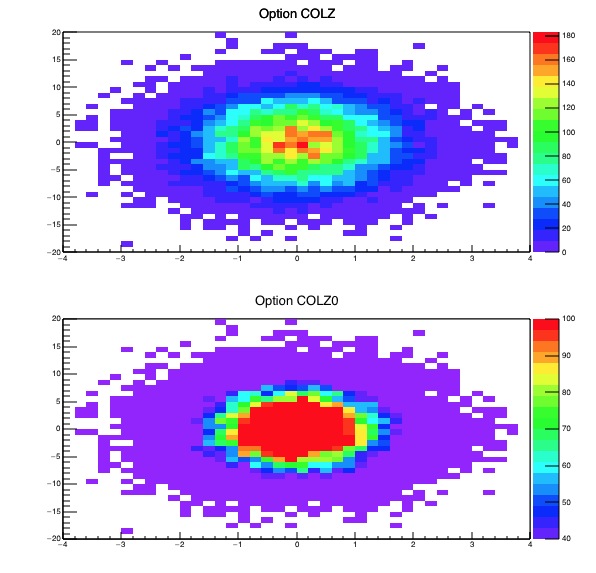
gStyle->SetHistTopMargin() was ignored when plotting a 2D histogram using the option E. This can be seen plotting the histogram with "LEGO E".GetObjectInfo did not display the right value form "Sum" for histograms plotted with option SAME on top of an histogram displayed with a subrange. This was reported in ROOT-7124.GeyStdDev instead of GetRMS. The stat box now shows Std Dev instead of RMS.The Stats Format was ignored when painting the pave stats for 2D histograms.
GetHistogram() in order to be able to access the returned histogram before the 2D graph has been filled with points. That was not possible previously. This problem was reported here.TGraph2D was entirely in the plane Z=0 the 3D could not be defined. This problem was reported here.TMultiGraph contained only one TGraph the number of bins for the internal histogram was not set correctly. This problem was reported here.GetNhists() to return the number of histograms in the stack.New drawing option NOSTACKB. histograms are drawn next to each other as bar charts.
Example:
TCanvas* nostackb() {
TCanvas *cst0 = new TCanvas("cst0","cst0",600,400);
THStack *hs = new THStack("hs","Stacked 1D histograms: option #font[82]{\"nostackb\"}");
TH1F *h1 = new TH1F("h1","h1",10,-4,4);
h1->FillRandom("gaus",20000);
h1->SetFillColor(kRed);
hs->Add(h1);
TH1F *h2 = new TH1F("h2","h2",10,-4,4);
h2->FillRandom("gaus",15000);
h2->SetFillColor(kBlue);
hs->Add(h2);
TH1F *h3 = new TH1F("h3","h3",10,-4,4);
h3->FillRandom("gaus",10000);
h3->SetFillColor(kGreen);
hs->Add(h3);
hs->Draw("nostackb");
return cst0;
}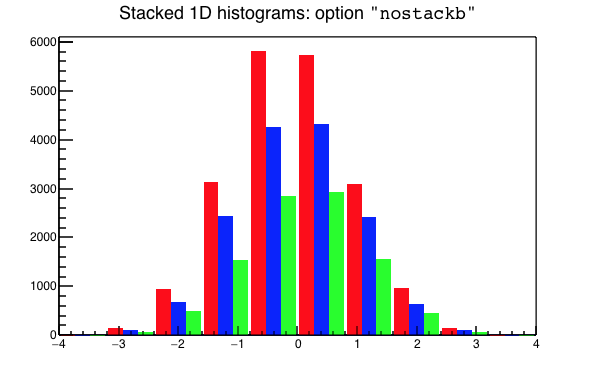
NOSTACKB plot example
TGTextViewostream class has been added. It is a text viewer widget and is a specialization of TGTextView and std::ostream. It uses a TGTextViewStreamBuf, which inherits from std::streambuf, allowing to stream text directly to the text view in a cout - like fashion. A new tutorial showing how to use the TGTextViewostream widget has also been added.TF1NormSum and TF1Convolution classes.TText position did not work in NDC mode. (se https://sft.its.cern.ch/jira/browse/ROOT-7284).TStyle global attribute gStyle->GetLegendTextSize() to set the legend item text size. If this value is 0 and if the text size directly set on the TLegend object is also 0, then the text size is automatically computed to fit the legend box. If gStyle->GetLegendTextSize() is non equal to 0 and if text size directly set on the TLegend object is 0, then the gStyle value is used to draw the legend text. If the text size directly set on the TLegend object is not null, then it is used to draw the legend text._ produced an error outside the TeX math context.TStyle::SetLineScalePS() to control le global basic line width.TMathtext, only the fonts really used are now loaded in the PostScript file. Typically it reduces the file size by a factor 10 (compare to the previous implementation) for normal plots with math formulae and greek characters.TPad::ShowGuidelines the number of guide lines is limited to 15. Above that they become useless.GetTextExtend method behaved differently in batch mode and “screen” mode. This is now fixed. See http://root.cern.ch/phpBB3/viewtopic.php?f=3&t=18883\mu is now working for Postscript output.\splitline is now implemented.textviewostream.C showing how to use the TGTextViewostream widget.Support ARM 64 bits architecture.
Partial support for PPC 64 bits Little Endian architecture.
Add “Optimized” CMAKE_BUILD_TYPE: allow highest level of optimisation of the GCC and Clang compilers (-Ofast).
Support ccache activation with cmake configuration switch.
Support link to jemalloc and tcmalloc allocators.
Careful suppression of known and understood warnings, e.g. coming from external packages.
TF1::SetNormalized(true) is called, when evaluated, the function will return its value divided by its integral computed in the function range.TTreeReaderArray now supports vector<builtin-type>.TTeXDump::DrawPolyMarker.#sqrt is always >=1.CMake and ensure that works for MacOSX 10.11TClingCallFunc ROOT-7684TChain with friend trees.BasicType[42]cmake command not in my PATH now fixed ROOT-7715builtin_xrootd option that was not working for XROOTD version 4.2.2.gnuinstall also sets RPATH in librries and executables in installation directoryTMethodCall from a TFunction.ROOT version 6.04/10 was released on 18 November, 2015.
Changes will be part of the future 6.04/12